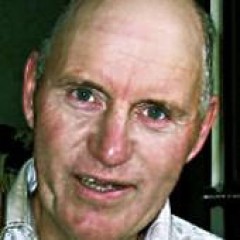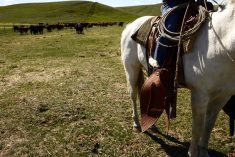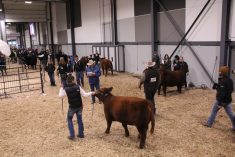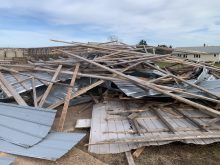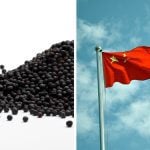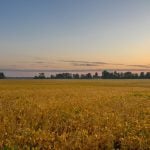I am writing this article in mid-October. At this time all indications are that cattle prices will remain strong through the fall run. I sincerely hope this occurs. By the end of the year everyone will have had the opportunity to benefit from the stronger prices. This is the first step to rebuilding confidence in the cow-calf sector.
The future is uncertain and unpredictable. We have had one good year. All the indicators in the cattle business would suggest several more good years to come. This might be an ideal time to plan and create the future you desire. In last month’s article I suggested that we will experience an increase in income of over $500 per cow. Producers with 200 cows will see their income and profit (with proper planning) increase by more than $100,000. It’s entirely possible that we will experience four or five good years in a row. This could easily translate into $500,000 or more to invest in our businesses. This is a sizable amount of money. It deserves serious thought as to how best to invest it. Have you thought of your own business over the next five years? How much profit are you likely to have to invest?
Read Also

A strategic approach to risk on the ranch
Given the increase in the value of livestock and the market volatility, we need to cover our risks. First,…
Goal setting is a great place to start when we are considering the future. The basis of HM is to make better decisions. Decisions that are simultaneously socially, environmentally and financially sound. We begin this by developing a three-part goal.
- More ‘Holistic Ranching’ with Don Campbell: The danger in strong cattle prices
The quality of life portion deals with all the people issues. The forms of production portion deals with what we will do to ensure our quality of life and what we will produce at a profit to support ourselves. The landscape portion describes what our land must look like to support us today and to support future generations for years to come. At this point we have a clear long-term goal to give us direction for many years. We now use all available tools and knowledge to help us move towards our goal.
This is an ideal time to develop a five-year action plan. How will I invest my profit? What changes will I make to my business to ensure that it will remain profitable and sustainable?
To help us make these decisions we can look at the weak link test. This is one of the seven testing questions we use to help us make wise decisions. It is based on the fact that at any given point in time our businesses will be weak in one area. This is the place where it is wise to invest and strengthen our business. There are three basic phases to our business: growing, harvesting and marketing.
- The growing phase asks: Am I capturing the maximum amount of solar energy? Am I growing enough grass per acre?
- The harvesting phase asks: Am I converting my grass production into a saleable product efficiently? In this phase we would ask questions like: Do I have enough animals? Do I have the right class of animals? Is my gross profit high? Is my weaning percentage reasonable? Is my weaning weight where it is most profitable?
- The marketing phase asks: Am I able to market my production so that my business is profitable? Do I know the value of my animals? Do I have flexibility in marketing?
Determining the weak link requires some time and reflection. Basically you are asking: What would improve my business the most at this point in time? Do I need to grow more grass? Do I need to improve my harvesting or do I need to improve my marketing? The quickest way to improve your business is to strengthen the weak link. Money spent doing this is like an investment. In HM we refer to money spent on improving the weak link as a “W” (wealth-generating) expense. It makes no sense to continue to do more of what you are good at and to ignore your weakness. The weak link needs to be evaluated at least once a year. If you have identified a weak link and taken steps to improve in that area you will likely have a new weak link next year.
Here are some examples of “W” expenses for different weak links. This is not an exhaustive list, just some thoughts to get you started. The idea is to brainstorm as many ideas as possible that may improve the weak link. We then evaluate the list and use the ideas that fit with our goal and are most likely to have the biggest impact on our bottom line.
If the weak link is Growing, “W” expenses might be: education, fencing, better grazing management, water development, bale grazing, grass seed, etc.
If the weak link is Harvesting, “W” expenses might be: education, more animals, a longer grazing season, a different class of animals, semen testing, etc.
If the weak link is Marketing, “W” expenses might be: education, purchasing a scale, controlling shrink, pricing your animals over time, knowing the price that makes you profitable, using Western Livestock Price Insurance, having adequate cash flow to market when you want, etc.
You will have noticed that no matter what the weak link is, education is always the first “W” expense. This is not an accident. The success of your business depends on you and your knowledge, skills and attitude. Investing in yourself is always a wise decision.
Finding the weak link and investing the money to strengthen the weak link will help us build short-term profit and long-term sustainability. Money spent in this manner is an investment not an expense.
I hope you are successful in investing your profit wisely. I hope we can all look back in 20 years and say: I invested my profit wisely. I made sound business decisions. I am still reaping the benefits. My children and grandchildren will benefit from my sound decisions. Happy trails.
Don Campbell ranches with his family at Meadow Lake, Sask., and teaches Holistic Management courses. He can be reached at 306-236-6088 or by email.

